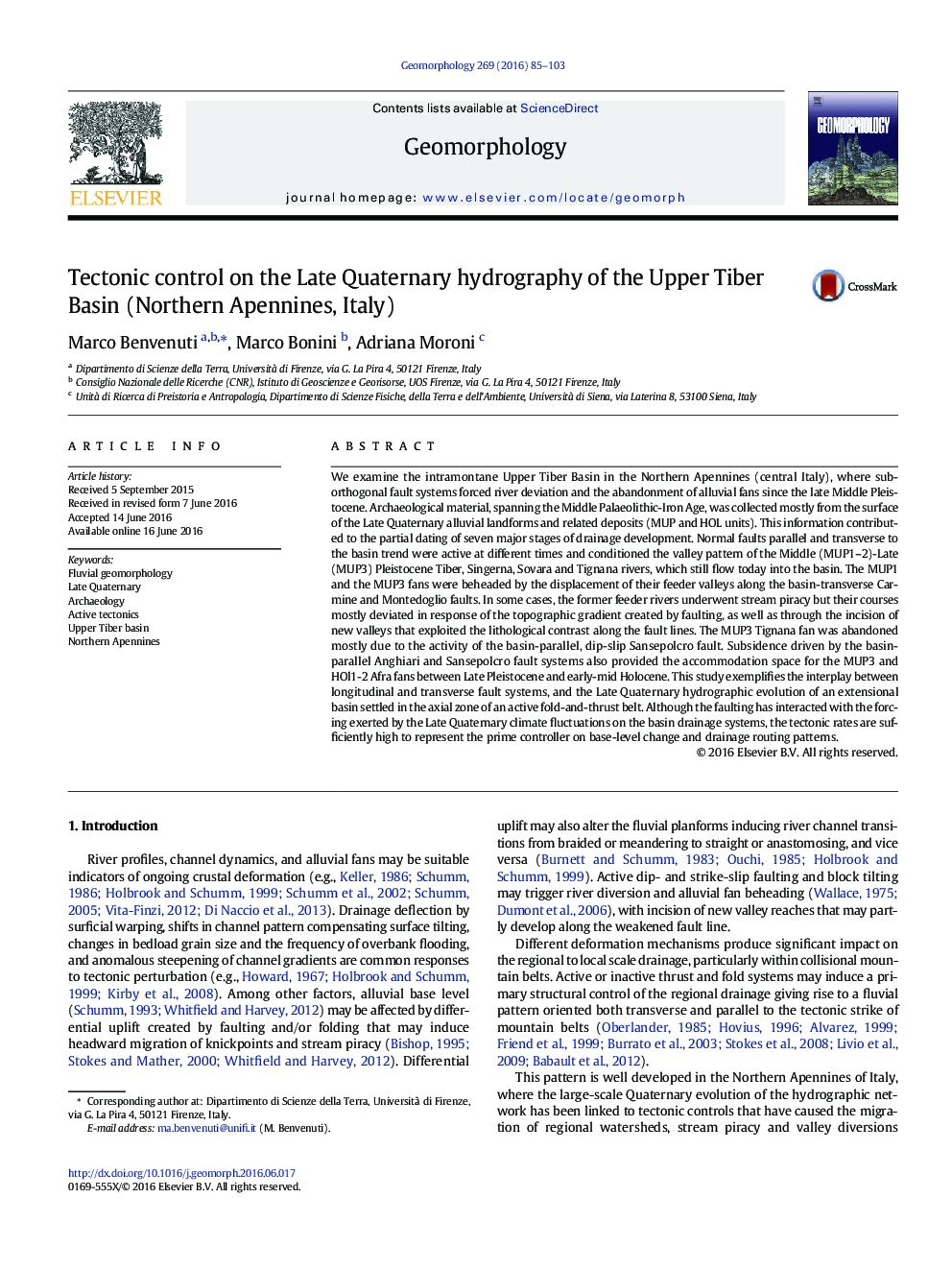| کد مقاله | کد نشریه | سال انتشار | مقاله انگلیسی | نسخه تمام متن |
|---|---|---|---|---|
| 4683933 | 1635380 | 2016 | 19 صفحه PDF | دانلود رایگان |

• The Upper Tiber Basin is a typical intramontane basin of the Northern Apennines (central Italy)
• River deviation/capture and abandonment of alluvial fans have characterized drainage dynamics since late Middle Pleistocene.
• Middle Palaeolithic-Iron Age archaeological materials provide time constraints for paleo-drainage dynamics.
• Activity in different stages of sub-orthogonal fault systems played a major role in forcing river adjustment
We examine the intramontane Upper Tiber Basin in the Northern Apennines (central Italy), where sub-orthogonal fault systems forced river deviation and the abandonment of alluvial fans since the late Middle Pleistocene. Archaeological material, spanning the Middle Palaeolithic-Iron Age, was collected mostly from the surface of the Late Quaternary alluvial landforms and related deposits (MUP and HOL units). This information contributed to the partial dating of seven major stages of drainage development. Normal faults parallel and transverse to the basin trend were active at different times and conditioned the valley pattern of the Middle (MUP1–2)-Late (MUP3) Pleistocene Tiber, Singerna, Sovara and Tignana rivers, which still flow today into the basin. The MUP1 and the MUP3 fans were beheaded by the displacement of their feeder valleys along the basin-transverse Carmine and Montedoglio faults. In some cases, the former feeder rivers underwent stream piracy but their courses mostly deviated in response of the topographic gradient created by faulting, as well as through the incision of new valleys that exploited the lithological contrast along the fault lines. The MUP3 Tignana fan was abandoned mostly due to the activity of the basin-parallel, dip-slip Sansepolcro fault. Subsidence driven by the basin-parallel Anghiari and Sansepolcro fault systems also provided the accommodation space for the MUP3 and HOl1-2 Afra fans between Late Pleistocene and early-mid Holocene. This study exemplifies the interplay between longitudinal and transverse fault systems, and the Late Quaternary hydrographic evolution of an extensional basin settled in the axial zone of an active fold-and-thrust belt. Although the faulting has interacted with the forcing exerted by the Late Quaternary climate fluctuations on the basin drainage systems, the tectonic rates are sufficiently high to represent the prime controller on base-level change and drainage routing patterns.
Journal: Geomorphology - Volume 269, 15 September 2016, Pages 85–103